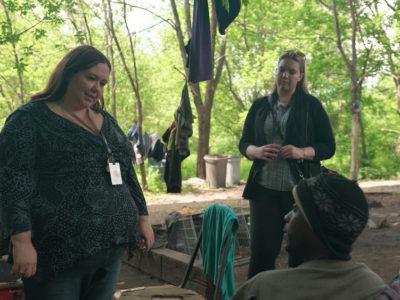This week, the Rockford/Boone/Winnebago continuum of care, a region of over 350,000 people in Northern Illinois, became the first community in the country to announce that it has achieved functional zero for veteran homelessness, a major accomplishment in the nationwide fight to end veteran homelessness.
Several other communities have already announced they have ended veteran homelessness. What makes this one is unique?
Rockford is the first community in America to satisfy Community Solutions’ rigorous definition of an end to veteran homelessness. This definition represents an extraordinary standard of housing performance, system capacity and data quality.
In the entire Rockford region, zero veterans remain on the streets and just eight remain in transitional housing. This is equal to the number of veterans Rockford has proven it can routinely house in a given month.
All eight of Rockford’s remaining homeless veterans are in the process of being connected to permanent housing. They are indoors, known to the city by name and represent just .08% of all veterans living in the city of Rockford. If you’re a veteran, Rockford has your back.
“Rockford’s success proves that functional zero is achievable. No community can ever again claim that ending veteran homelessness is impossible or that it cannot be measured clearly in real time.”
Rockford’s success proves that functional zero is achievable. No community can ever again claim that ending veteran homelessness is impossible or that it cannot be measured clearly in real time.
So, what does it mean to reach functional zero? In reaching this milestone, Rockford has proven that it is routinely able to house more veterans each month than are experiencing homelessness at any given time. We can test and prove this capacity because, while 8 veterans are currently experiencing homelessness in Rockford, the region has housed at least that many veterans per month on average over the past six months. The data confirm the region is now measurably and sustainably ensuring that homelessness among veterans is a brief and rare occurrence.
These objective criteria are deceptively simple, but achieving them is hard.
Rockford owes much of its success to the leadership of Mayor Larry Morrissey, who publicly committed to the goal of ending veteran homelessness by the end of this year and pushed the community to set targets and measure progress transparently and accountably each week. In his announcement remarks, Mayor Morrissey also committed to sustaining functional zero and challenged any skeptical constituent to attend his weekly meetings on the issue and review the data with him going forward.
That’s leadership.
The local team at the Rockford Department of Human Services, led by Jennifer Jaeger and Angie Walker, also spearheaded a tremendous effort to know every veteran experiencing homelessness by name, and to truly understand their needs. In Rockford, this information feeds into a constantly updated a master by-name list of every veteran experiencing homelessness in the community.
Think about it. This means that every time a veteran becomes homeless in Rockford, that veteran is known to a centralized database in real time. All partner agencies have access to that database, and they immediately begin coordinating around a process to move that veteran into housing. No one is subject to the lethal anonymity of homelessness.
Rockford is also unique because any veteran who moves into temporary shelter or transitional housing there is kept on the community’s by-name list of people experiencing homelessness. The local team maintains constant communication with that veteran until permanent housing is secured. Veterans living in shelter and transitional housing are still homeless. Rockford is committed to ensuring that these programs are a rapid entryway into permanent housing, not the end of the line.
Rockford also developed and refined a top-class housing system, including a single point of entry for veterans to have their needs assessed, a veteran’s committee comprised of community partners who often encounter and provide outreach to homeless veterans, and the cultivation of relationships with local fire, police and park personnel who are trained to notify the city when they encounter unsheltered veterans. All of these efforts allowed Rockford to create a housing system built for zero, optimized to end and maintain an end to veteran homelessness across the community.
In Rockford, the entire housing process is currently taking an average of just thirty days. As part of this system built for Zero, the team in Rockford began providing temporary bridge housing for veterans while permanent housing was being secured. They tapped into a variety of resources, some of which include emergency shelters, grant per diem providers and transitional housing. They also adopted a housing first approach, ensuring that help is available to all veterans experiencing homelessness, regardless of preconditions like sobriety, income, or criminal backgrounds.
Especially of note is the fact that VA-funded transitional housing and rehab programs, like Rosecrance, worked together with permanent housing providers to focus their existing programs and resources in the service of expediting permanent housing for veterans. In too many communities, these two communities still operate as separate systems, despite serving the same populations. Rosecrance recognized that there are no sacred cows when it comes to solving complex problems. They and other local providers stepped way outside of their comfort zones, demonstrating remarkable leadership and redefining what is possible.
While we know that there may be other veterans who fall into homelessness in Rockford in the future— whether due to the loss of a job, an unexpected medical emergency, or any other reason— the region can now measurably ensure that homelessness will be a temporary difficulty in a veteran’s life.





